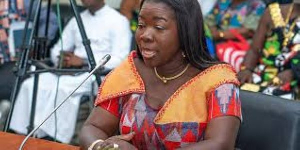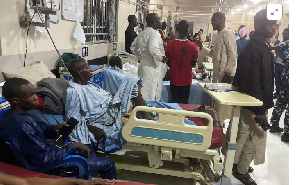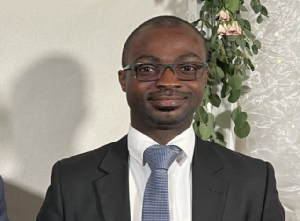The Western Regional House of Chiefs (WRHC) has petitioned the National House of Chiefs (NHC) to review the elevation of the Awiaso Traditional Area to paramount status.
According to the WRHC, the elevation of the Awiaso to a paramountcy was not only questionable, but did not sit well with the House, because its members were not informed to deliberate on whether or not to accept the elevation of Awiaso to paramount status. A member of the WRHC, who spoke to this reporter on condition of anonymity, confirmed the story, and added that the House, at its last meeting, raised questions about the elevation of the said paramountcy.
According to the source, the House had petitioned the NHC to review its decision. “We don’t have power to expunge Awiaso from our list, that is why we have petitioned the NHC to look into what we consider as questionable elevation,” a member of the House told this reporter in a telephone interview.
Meanwhile, a document in the possession of The Chronicle indicates that before the NHC could act on the WRHC petition to review the Awiaso paramountcy elevation, the latter had since expunged the Awiaso Paramount Stool from its list of recognised paramouncies, bringing the number of paramount stools in the region to twenty-two.
The decision to expunge the Awiaso Stool was taken at a meeting of the House on the 27th of November 2013. In the said document, the House unilaterally expunged the name of Awiaso from its Paramountcy list. Odeneho Yaw Gyebi II, a member of the House, was first to move a motion for the deletion of Awiaso as a paramountcy under the WRHC, which was seconded by Osabarima Kwaw Entsie, Omanhene of Mpohor.
The House then unanimously upheld the decision to write to the NHC to inform it of the current resolution in the WRHC, concerning what it described as questionable elevation of Awiaso as a Paramountcy. “The position of the WRHC was that the elevation of Awiaso as a Paramountcy did not pass through the laid down procedure for elevation, and should be annulled and expunged from the National Register of Chiefs,” the document indicated.
It would be recalled that the WRHC set up a committee to look into a petition brought by one King Kaku Aka II on the 3rd of July 2006, praying the National House of Chiefs to insert his name into the Register of the National House of Chiefs to be recognised as Overlord of the Nzema Kingdom, with Awiaso as his capital. The said committee was constituted by the then President of the Regional House of Chiefs, Awulae Attibrukusu III, Paramount Chief of the Lower Axim Traditional Area.
Members of the committee who sat on the case were Nana Atta Kwesi Brembi II, Chairman and Paramount Chief of Suaman-Dadieso Traditional Area, the late Nana Kweku Binna, Member and Paramount Chief of Shama Traditional Area, and Osabarima Kwaw Entsie, Member and Paramount Chief of Mpohor. The committee invited the paramount chiefs of Eastern and Western Nzema, Awulae Annor Adjaye III and Awulae Blay VIII respectively, as respondents in the petition brought by King Kaku Aka.
The divisional chiefs, queenmothers and elders of the aforementioned two paramountcies also appeared before the committee to give evidence. The reason why the paramount chiefs of the Eastern and Western Nzema traditional councils were the respondents in the petition was that the petitioner claimed the late king, Kaku Aka I, was the Overlord in charge of the two paramountcies until the creation of the said paramountcy after the demise of the king.
The two created paramountcies (Eastern and Western Nzema) were, until the death of the King, not referred to as such. After the lengthy and exhaustive sitting, the committee came out with it report. The report, which was sent to the National House of Chiefs for consideration, was headlined ‘Report of Committee of the Western Region House of Chiefs on the Petition for Entry of Kaku Aka II Name into the National House of Chiefs.”
In the report signed by its members, the committee stated that there was no evidence to establish that King Kaku Aka II was enstooled in accordance with accepted customs and culture of the Nzema people to ascend the throne as Overlord of the Nzema Kingdom.
Regional News of Thursday, 17 July 2014
Source: The Chronicle












